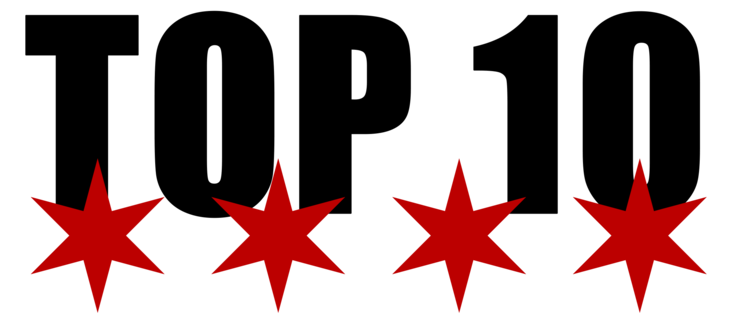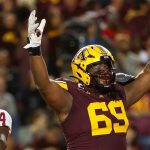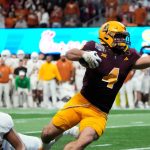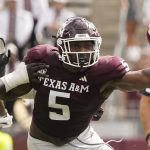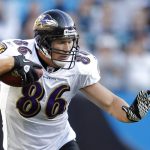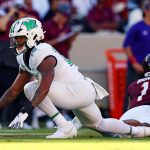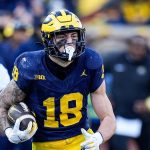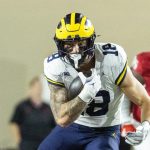The Chicago Bears quarterback trials began back in the early 1950s and had lasted through to the early 1970s. While they’d often employed men of significant talent, something always seemed to go wrong. Bobby Layne was traded. Johnny Lujack prematurely retired. George Blanda was on bad terms with George Halas. Rudy Bukich got his shot too late at 35-years old. Bobby Douglass never had the right system around him.
On and on it went. Then again, it’s not like the Bears were always perfect at evaluating the position. They collected their fair share of stinkers who simply couldn’t play. Halas hoped things might change in 1974. That was the year he decided to shake things up by hiring their first-ever general manager. His choice was longtime Minnesota Vikings GM Jim Finks who’d recently resigned.
It made sense on the surface. Finks had lured Joe Kapp down from Canada and then traded to retrieve Fran Tarkenton from New York. He seemed to have a grasp on what sort of quarterbacks were needed to produce a winner. Could he solve the Bears’ problem? Time would certainly tell, but his job went far beyond just that. The man had inherited an absolute train wreck and many moves were needed to fix it.
Chicago Bears adhered to old ways when Finks arrived
The thing was Finks was anything but a visionary. He was just a good, solid talent evaluator who came from a team that embraced the same style the Bears did. They wanted to run the ball and play great defense. This is undoubtedly why Halas hired him in the first place. Finks knew how to build that sort of roster in order to be successful. His first draft in 1975 perfectly reflected that.
Subscribe to the BFR Youtube channel and ride shotgun with Dave and Ficky as they break down Bears football like nobody else.
The first four picks followed that methodology to the letter. Finks’ inaugural choice and the best of his career was Jackson State running back Walter Payton. He would become the all-time NFL leading rusher and pace the Bears offense for over a decade, winning MVP honors in 1977. The next pick was a solid defensive end, Mike Hartenstine. He’d become a dependable pass rusher for the next several years.
In the 4th round, he acquired decent cornerback Virgil Livers and in the 5th he boosted the offensive line with guard Revie Sorey. If people were looking for an idea about where on the priority list Finks had quarterback at that time, they need look no further than his picking of Bob Avellini out of Maryland in the 6th round.
To be fair the 1975 quarterback class was weak compared to others, but Finks showed his lack of scouting prowess at the position right away when he bypassed Kansas State product, Steve Grogan. A man who would throw 149 more touchdowns in his career than Avellini. Thus the train kept moving down the tracks.
Bob Avellini: Moving in slow motion
It really is difficult to understand how Avellini ever got a shot in Chicago. He wasn’t any sort of highly-touted prospect in college. In three years at Maryland, he threw 15 touchdowns to 27 interceptions. Worse still, he went against the previous Bears desire of having a mobile quarterback who could run. Avellini was so statuesque that teammates branded him with the nickname “Slow-Mo.”
Perhaps the key event that got Avellini his opportunity was a change to the Bears coaching staff. Jack Pardee took over the team in 1975. After getting pictures of Douglass and Gary Huff that first year, it became obvious he wanted to go a different direction. Avellini, to his own good fortune, was the only other option on the roster at that time. He started the final four games that year. To his even greater fortune, the last two were against the Cardinals and Saints.
Teams with two of the worst pass defenses in the NFL.
Avellini threw five touchdown passes in those games. That was enough for the Bears. He was made their permanent starter in 1976. It turns out though that his strong finish as a rookie was hardly a portent of things to come. Avellini became another in a long line of mediocre quarterbacks forced to lean on a superstar running back. Payton ran for 1,390 yards and 13 touchdowns that year. Avellini managed only 8 touchdown passes with 15 interceptions.
His “best” year came in 1977. Aided by a herculean Payton who ran for over 1,800 yards and 16 touchdowns, the quarterback managed 11 touchdown passes (with 18 interceptions). The biggest of which, to his credit, saved the Bears’ season in a furious comeback against Kansas City.
However, despite the Bears finally breaking their playoff drought after 14 years, opponents already knew how to beat them. Stop Payton and you probably win. Sure enough in four games that regular season, opponents that held the Bears running back to under 100 yards were 3-1. Avellini had 1 touchdown pass and 6 interceptions in those games.
Sure enough, this exact scenario came true in the postseason opener.
Facing the eventual champion Dallas Cowboys, Payton was held to just 60 yards on 19 carries. When the game started to get out of hand, the Bears had no choice but to let Avellini throw. He did find the end zone once to avoid the shutout, but he also found the opposition four times. Three of them to the same guy.
What little magic he may have had that year completely vanished in 1978. Avellini started 12 games, throwing just 5 touchdown passes with 16 interceptions. He would remain with the Bears moving forward but was only a backup and spot starter until he was finally cut in 1984. Nobody summed his time with the team up better than Mike Ditka.
“In the long-range picture for the Bears, the quarterbacks we have here now are better than Bob,” said Ditka. “He wanted to do too much. He tried to go outside of our offense and that’s something you just can’t do. You don’t go out and audible to throw a five-yard pass (the play against Seattle) when we have a runner (Walter Payton) who averages 5.7 yards per carry…
…He did everything we asked of him, and there were a lot of things I liked about him. But on my radio shows, the No. 1 question was, ‘Why do you keep Avellini?’
I can’t play him here. The fans would boo him unmercifully. I don’t want to use that as an out, but it’s true. People have a tendency to blame the quarterback and to give him too much credit.
No matter what he did (earlier this year) they would have booed because of the last nine years. There’s no question about it.”
Mike Phipps: The first hoodwink
Finks made some fantastic trades in his long career as Bears GM. A few examples? He dealt injured three-time Pro Bowler Wally Chambers for the Bucs’ 1st round pick in 1979. That pick became the 4th overall and turned into Dan Hampton. Then in 1982, he dealt a 2nd round pick that year to, again, Tampa Bay for a 1st in 1983. That pick became the 18th overall and turned into wide receiver Willie Gault.
The man pulled off some massive steals. However, Finks was not infallible. He was guilty of some serious miscalculations on the trade market. By far the biggest of his career naturally involved a quarterback.
Even before the 1977 season began, the GM recognized that Avellini wasn’t the guy of the future. There was one problem though. Incoming college classes at that point in time did not look strong at the position. The best names to come out between that year and 1978 were Tommy Kramer out of Rice and Doug Williams of Grambling. Both would have a solid career, but couldn’t be called gotta-have-it guys.
So instead Finks decided to seek his next guy out via trade.
There was a problem though. He’d reached this decision a year too late. If he’d made that move in 1976, there were options available. One was former #1 overall Jim Plunkett, who’d worn out his welcome with the New England Patriots. The other was an unheralded kid named Lynn Dickey who wasn’t getting a chance to play much down in Houston.
Plunkett likely wouldn’t have been feasible. It cost San Francisco three 1st round picks and a 2nd round pick to get him. Dickey on the other hand only cost Green Bay two throwaway players, a 3rd round pick, and a 4th round pick. Plunkett would go on to become a two-time Super Bowl winner for the Raiders. Dickey threw for 3,000 yards three times for the Packers with over 4,400 in 1983.
Unfortunately, this merely proved a bad habit of Finks that he would never shake. He’d always make his big move for a quarterback one year off the sweet spot.
His big move came in May of ’77 when he shocked several people by shipping a 1st round pick in the ’78 draft for the rights to Cleveland Browns quarterback Mike Phipps. To this day there hasn’t been a good explanation for why that trade was made. Phipps was a former 3rd overall pick who’d starred at Purdue but the previous seven seasons in Cleveland had seen him go 24-25-2 as a starter with 40 touchdowns and 81 interceptions.
He was neither productive nor a winner. Giving up a 1st round pick for that made no sense then and still doesn’t today. What makes it even worse is that pick eventually turned into Hall of Fame tight end Ozzie Newsome. Somebody who could’ve significantly helped open up the Bears passing game.
Phipps didn’t get his chance to play until his second year in Chicago.
He went 3-1 but with 2 touchdowns and 10 interceptions. Incredibly, this didn’t stop the Bears from handing him the starting job in 1979. Aided by a strong defense and Payton’s running, he went 9-1 while reaching 9 TDs to 8 interceptions. It’s worth mentioning that five of those wins saw the Bears give up seven points or less. His inadequacies finally came to light as they often do. In the playoffs. Against Philadelphia, he threw two costly interceptions and completed just 13-of-30 passes.
He started just six more games after that, going 2-4 with only two touchdowns and nine interceptions. For all the good things Finks did at that time, it’s hard not to feel like that trade held the Bears back from earlier success.
Vince Evans: Breaking a barrier
Most people might not get this trivia question correct. Who was the first black quarterback in Chicago Bears history? It’s likely the name to come up would be Kordell Stewart. Those people would be decades late. That honor belongs to Vince Evans, a 6th round pick out of USC in 1977. His career path is a rather fascinating one.
African-American quarterbacks were not embraced by the NFL in those days. Warren Moon went to the Canadian Football League after leaving Washington because teams wanted him to switch positions. He refused and it took years for him to finally return in 1984. The same was also true of Evans. Initially, Chicago wanted him to switch to another offensive spot.
Evans made a stand, having the Bears put a clause in his contract that forbade them from doing so. Thus he spent his first two NFL seasons on the bench, throwing three passes total. Not until ’79 did he see more action, starting three games. He went 0-3 with 4 TDs and 5 interceptions. A year later though, the lingering quarterback controversy enveloping the team at that time finally swung in his favor.
He became the firm starter in 1980, appearing in 10 games. It would be that season he delivered one of the best performances a Bears quarterback would ever have. Against Green Bay in December, Evans threw for 316 yards with three touchdowns and a perfect 158.3 passer rating as part of a 61-7 demolition of the Packers.
That game proved to be his peak though.
Evans crashed and burned after that with four interceptions in his very next game. He remained the starter in 1981 but showed no improvement. Chicago went 6-10 while he managed 11 touchdowns and 20 interceptions. When Ditka took over the next year, he was relegated to backup.
It was a frustrating time for Evans. He stuck it out for two years though and had planned to return for 1984, but was lured to the upstart USFL’s Chicago Blitz to become their starter. It’s a move he later called the biggest mistake of his life.
“One of the major regrets of my football career. The Bears had drafted Jim McMahon, and the USFL was offering a lot of money and a starting position. McMahon got hurt, and I probably would have played. My ego got in the way.”
Indeed. McMahon missed seven games that year. Yet the Bears still went all the way to the NFC championship without him. Evans could’ve been part of that ride and likely ended up with a Super Bowl ring the next season. Instead, he had two forgettable years in a bankrupt league and returned to the NFL in 1987 where he’d spend the rest of his days as a backup for the Raiders.
That question of bad timing
Before moving on, it is time to address the primary issue with the Bears that often surfaced over and over from that period over the next few decades. Remember how I said the team developed a horrible sense of timing when it came to going after their quarterbacks of the future? Well, the origins of this began in the late 1970s.
Finks had traded his 1st round pick in ’78 for the rights to Phipps. This coming a year too late after the Plunkett and Dickey trades. However, it also came a year too early for the next great quarterback draft in 1979. That year was when future New York Giants star Phil Simms came out, going 7th overall. Just two picks ahead of the Bears at #9. The far bigger name though went a bit later in the 3rd round.
A young kid out of Notre Dame named Joe Montana.
One of the three greatest quarterbacks in NFL history was right there for the taking. In fact, Chicago came painfully close to drafting him. They even had his name written on the card to turn in. Finks though, satisfied with the depth the team had at quarterback, decided to look elsewhere.
The Bears were up and Montana was available. Tobin’s heart began to race. Vainisi said he stood and removed a magnet with Montana’s name on it from the bullpen area of the team’s draft board. He placed it under the Bears’ picks.
And then Finks, clearly in command, spoke up. “Put him back in the bullpen,” Finks said, according to Vainisi. Finks then expressed concern about a crowded quarterback depth chart. The Bears had Bob Avellini as their starter, and he was being pushed by Mike Phipps. Vince Evans had been showing great ability in practices. Why, Finks asked, should we muddy the waters with another quarterback? And then Finks started talking about how he was uncomfortable with the running backs behind Walter Payton.
By now the Bears were deep into the allotted time on the draft clock. As the seconds wound down, Finks announced the Bears would take Willie McClendon from Georgia, the highest-rated running back remaining on the Bears’ board.
“I was stunned,” Vainisi said.
“Bill Tobin almost had apoplexy,” McGrane said. “He was beside himself, sick he didn’t get Montana.”
Montana would beat the Bears in two NFC championship games during the 1980s, robbing them of precious opportunities to win a second Super Bowl. Amazingly, the poor timing didn’t end there. It happened again four years later when the Bears took Jim McMahon 5th overall in 1982.
This may sound blasphemous today.
McMahon became a Pro Bowl player in Chicago and won them a championship. Yes, this is true. However, the context is always key. The next year in 1983 produced the best quarterback draft in NFL history. The 1st round alone delivered John Elway, Jim Kelly, and Dan Marino. Three all-time greats. The Bears held the 6th overall pick in that draft and would’ve had their pick of Kelly or Marino.
Hell, they could’ve had Marino again with the 18th pick later in the round. With McMahon in place though, there was no chance they’d be drafting a QB that high. Another missed opportunity. One that would continue to haunt the franchise for years to come.
Jim McMahon: The reckless renegade
He is the greatest quarterback of the Super Bowl era in Chicago. Nobody would really dispute that, which is kind of sad. This is not to somehow sully the name of Jim McMahon. Let’s make this clear. The guy was an outstanding quarterback. He could’ve been right up there with the greats of that era and be in the Hall of Fame. No joke. He had the intelligence, the arm, the accuracy, and the competitiveness to get that far.
His body just couldn’t meet those desires.
Two words come to mind about McMahon during his Bears career. They are “winner” and “injuries.” From 1982 to 1988, he went an unprecedented 46-15 as a starter. People think he was just another game manager for the ground-and-pound offense of those days. They forget how much the man could make from his limited opportunities. In his first four seasons, he threw for 7,859 yards, 47 touchdowns, 33 interceptions, and an 84.28 passer rating. In 43 games.
It may sound pedestrian today, but back then given what the Bears had lived with for so many years? It was a revelation. It’s fair to wonder how different things might’ve been had he ended up in a more modern offense that embraced throwing the football. Something Ditka would never do. It is why the two clashed so often because McMahon kept altering play calls.
Not that the QB cared. He had validation from a higher authority.
In the end, it was that same fearlessness that got McMahon in trouble in other ways. He had a tendency to hang in the pocket in order to find shots down the field. He also didn’t hesitate to run and refused to slide. This led to him taking several big hits. Vicious hits. It wasn’t long before it became clear his body wasn’t built for that kind of punishment.
People would cringe hearing about the number of ailments he suffered. The list includes multiple concussions, severe back spasms, a lacerated kidney, bruised ribs, and hamstrings. Not to mention a knee injury he suffered in college and the fact he was half-blind from a stabbing his eye with a fork when he was a child. Then there was the most infamous setback of all. One that had less to do with poor decision-making and entirely to do with pre-meditated headhunting.
That unbelievably dirty hit by Green Bay Packers defensive end Charles Martin late in the 1986 season worsened a shoulder ailment McMahon had already been dealing with. It knocked him out for the rest of the season and completely derailed the Bears offense at the worst possible time. This resulted in a painful first round exit in the playoffs despite finishing 14-2.
McMahon was never quite the same after that play. Teammates and even his coach to this day lament how different things might’ve been had the quarterback been able to stay on the field.
“No question that he shortened his career because of the way he played,” Ditka told Cohen. “He ran, dove, hung on to the ball way too long. … He had no regard for his body. But I couldn’t change him. I would have ruined him.”…
…Cohen wrote: “It was not just McMahon at quarterback the Bears missed. It was McMahon as a leader. When he was in the huddle, the players always believed they had a chance. As a result, everyone performed. It was a different team with him on the bench.”
Defensive tackle Steve McMichael told Cohen: “We could have been the team of the decade if McMahon stayed healthy.”
Wide receiver Brian Baschnagel added: “I think Jim alone, because of his injuries, was the reason the team didn’t win multiple Super Bowls.”
What’s so painful about it is even in his weakened state, McMahon won.
The Bears were 18-5 in their final 23 games with him under center. This despite his productivity taking a major dip (24 TDs and 27 INTs) from ’86 to his last season with them in 1988. It was a painful day for fans watching him leave, knowing so much great football had been stolen from him. He continued a long career with stops in Philadelphia and San Diego before concluding things as a backup in Green Bay, winning another Super Bowl with the same team that had hastened his demise a decade earlier.
Proof, if nothing else, that McMahon never let the small things bother him.
Steve Fuller: The substitute teacher
Nobody was under any illusions about Steve Fuller. He was the backup quarterback for the Chicago Bears in the mid-1980s. He wouldn’t be mentioned on this list for that reason except he played a lot during that time due to McMahon’s constant health problems. In total, he started 11 games from 1984 through 1986 and posted a respectable 6-5 record.
Of course when one has Walter Payton and the best defense arguably in NFL history? It’s easy to post a winning record.
Fuller was a failed 1st round pick from Kansas City. Though boasting good size and running ability, he was limited as a passer. He didn’t have a great arm, wasn’t always accurate, and worst of all had a bad tendency to hold the ball. This led to sacks. Lots and lots of sacks. In those three years spanning 13 starts, he was sacked 45 times. It was hard to watch at times.
Still, for one year, he managed to put it all together.
Fuller battled injury problems of his own in ’84, sitting out for most of December after going 2-2 as a starter. However, he threw three touchdowns to no interceptions in that stretch and kept that hot streak upon his return in the playoffs against the defending champion Washington Redskins. In what would prove to be the best game of his NFL career, he threw for 211 yards and 2 touchdowns without an interception. Both scores coming in the second half.
Sadly he ran out of magic the next week in San Francisco, throwing for just 87 yards, an interception, and getting sacked 8 times. Fuller was what he was. If you gave him a great supporting cast, he’d keep the train on the tracks. Try to put the game on his shoulders alone? It wasn’t going to end well. Perhaps the best thing about him was his unselfishness. Fuller never had a big ego about anything. Teammates loved him.
Unless that involved taking an ass-chewing from Coach Ditka. He sold out others at the drop of a hat in those situations.
“I was signaling in the plays,” Fuller said, “and a lot of times, Coach Ditka would give me the play and something else was run and he’d look at me and say, ‘What did you call?’ Of course I’d say, ‘Coach, I called exactly what you asked.’ I passed that responsibility off very quickly.”
Say this for Fuller. He wasn’t an idiot either.
Mike Tomczak: The gatekeeper
Fans today would’ve gobbled up the story of Mike Tomczak with relish. Here’s a young man who was born in Illinois. He grew up watching the Bears, went to Ohio State and after failing to get drafted, signs with them as an undrafted free agent. He makes the team and hitches a ride on their Super Bowl championship run in 1985.
So what was it about Tomczak that got him into the NFL? It wasn’t stats. He threw 32 touchdowns to 36 interceptions in college. No, there was something else. The best thing to call it was…luck. The guy just seemed to win a lot of football games despite looking ugly in the box score. He claimed two Big Ten championships for the Buckeyes. There was just something about his temperament. He knew how to keep teammates loose and motivated.
This came in handy when the McMahon injury woes ramped up.
Tomczak started six games in 1986, throwing five touchdowns to 10 interceptions but still managing a 4-2 record. One could say he was a catalyst for the near-mutiny towards the end of the year when Ditka signed former USFL quarterback Doug Flutie and chose to start him going into the playoffs. A decision to this day former Bears thought was a huge mistake. They feel sticking with Tomczak would’ve been a far wiser choice.
“We had just won the Super Bowl with Mike Tomczak and Steve Fuller,” Richard Dent said. “To bring another All-American guy in, I didn’t feel was a great thing. He only played with us the last seven weeks. If I was an opposing team, I’d be glad to see him because I’d know there’s not much he can do. Can’t audible. I felt kind of bad because I felt we could win it with Fuller or Tomczak.”
It’s an interesting argument, but is it true? When Flutie started to play late in the year, he finished with three TDs and two interceptions. He also ran for another score. That same game Flutie started in the finale against Dallas? Tomczak came in later and went 1-for-6 with an interception. So it appears Ditka had a fair argument as well. Tomczak wasn’t playing his best at the time.
It didn’t matter. The Bears let that controversy fester and it ended up ruining their mojo in the playoff opener, where they lost 27-13 to Washington. Flutie got the blame for throwing two picks. Yet the next year the two teams met again and McMahon ended up throwing three.
Tomczak, to his credit, never let that deter him from continuing to work hard. By 1988, he was gaining momentum as the possible next starter. He came in late in the year and started five of the final seven games, going 4-1 and throwing a respectable six touchdowns to four interceptions. This was enough to get him the start in the playoff opener against Philadelphia.
A game everybody knows today as “The Fog Bowl.”
Tomczak started the game in outstanding fashion with a 64-yard bomb for a touchdown to open the scoring. Then he started to make mistakes. Even before the fog rolled in during the second half, he made some bad decisions with the ball. By game’s end, the Bears would be 20-12 winners, but he’d thrown three interceptions in the process. That performance was a big reason the Bears went back to McMahon in the NFC championship.
They lost 28-3.
That would prove to be Tomczak’s best chance to secure the starting job. By 1989, though he started 11 games, he went 5-6 with 16 touchdowns and 16 interceptions. Chicago made the decision to go with their young former 1st round pick Jim Harbaugh much of the second half of the season. Tomczak would be his primary backup in 1990 before leaving in 1991.
The best way to describe his time in Chicago was as an excellent backup who, like so many before and after, couldn’t seize the opportunity when it was there. Even so, anybody who wanted that job in the late 1980s would have to overcome him first. It’s something that proved true even after he left the Bears.
Jim Harbaugh: Unshakeable and unpredictable
By 1987, it was becoming clear that McMahon’s health issues were never going to go away. The Bears had to start thinking about the future at quarterback. In the 1st round with the 27th pick, they decided to grab Michigan standout Jim Harbaugh. While there wasn’t a full consensus on the choice, Bears Director of Player Personnel Bill Tobin was a huge fan.
He felt Harbaugh has the charisma, the leadership, and the character to run that Bears offense. Tobin was such a believer that years later while running the Indianapolis Colts, he brought Harbaugh in to become the starter there as well. His voice eventually won out in Chicago. Things didn’t happen right away though. Unlike most quarterbacks, especially today, Harbaugh saw the field sparingly in ’87 and ’88.
Not until a down year in 1989 did the Bears finally begin the transition to him. There were predictable missteps along the way as he went 1-4 as a starter with five touchdowns and nine interceptions. The team was undeterred though. Harbaugh became the undisputed guy in 1990. He went 10-4, got them back to the playoffs, and finished with 10 touchdowns and six interceptions.
This merely set the stage for the finest season of his career. One where he threw for 3,000 yards and while he still had a problem throwing interceptions (16) he always seemed to come up clutch when they needed him. Never more so than two big games against the New York Jets and New Orleans Saints.
Harbaugh had three 4th quarter comebacks that year.
Chicago finished 11-5 and won their last division title of the decade. Unfortunately, they ran into a future dynasty in Dallas in the wildcard round, losing 17-13 with the quarterback throwing two costly interceptions. Nobody knew it at the time, but that would be the pivot point of Harbaugh’s career with the Bears. The next season he actually started out well with six touchdowns and three interceptions in the first four games.
At 2-2, Chicago needed a win in Minnesota to keep pace in the division race. The game couldn’t have started better. The Bears controlled the action for the first three quarters, scoring 20 points while holding the Vikings scoreless. It was here that Harbaugh made the worst mistake of his career. Believing he saw a chance for a big play, he audibled out of the offensive play call on 1st down to throw an out pass to his left to Neal Anderson.
There was a problem though. The building was so loud that Anderson didn’t get the check. So when Harbaugh turned to fire the ball, the only one there waiting was Vikings cornerback Todd Scott.
That play sparked a furious rally for Minnesota, who scored 21 unanswered to stun the Bears 21-20, dropping them to 2-3. Ditka was absolutely enraged by the play. He knew what it meant at the time and what it could mean to the Bears’ season after the loss. It was so bad that he openly chastised the quarterback after the game, threatening to bench him.
“I’ll just say this: If it happens again, there will be changes made and they will be definite and they will be permanent. I’m not going to put 47 players’ futures in the hands of one player who thinks he knows more than I do.”
That single moment of rebellion cost Harbaugh dearly.
Despite winning the next two games to reach 4-3, a 38-10 blowout loss in the rematch with Minnesota where he again threw bad interceptions started his slide downhill. The Bears lost four-straight games, fell out of the playoff picture and he was finally benched.
Chicago finished 5-11 and Bears team president Michael McCaskey finally had his excuse to fire Ditka. Harbaugh would start 15 games in 1993 but threw only seven touchdowns all year. Dave Wannstedt, who replaced Ditka, didn’t wait long that next offseason to begin his search for a new quarterback. Harbaugh was cut, having gone 35-30 with 50 touchdowns and 56 interceptions.
The man was gutty and a leader but like so many before him, he had too many limitations to make it work for long.
Maybe a new decade would be different.


